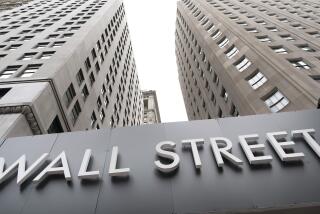New Stock Offerings Set Wall Street Record in ’93
- Share via
NEW YORK — From Vermont Teddy Bear Co. to China Tire Holdings Ltd., 1993 has been a blockbuster year for new stock offerings on Wall Street.
From Jan. 1 through Nov. 30, the brokerage firm of Lehman Brothers Inc. tallied 622 companies that went public, not counting closed-end mutual funds.
That easily broke the previous full-year record of 513 initial public offerings in 1992. Indeed, the $36 billion raised in IPOs so far this year came close to the $40 billion total for the two previous years combined.
“No matter how you slice it, this has been a big year for IPOs,” said Susan Hirsch, a Lehman Brothers analyst.
All this has been a source of delight--and unprecedented revenue--for Wall Street investment bankers. In textbook economics, it is also a big plus for the economy, in the sense that it provides capital for use in building and sustaining business enterprises.
“It’s an undertold story that this is creating a powerful base for long-term economic expansion,” says Richard Hoey, chief economist at Dreyfus Corp.
But the frenzied IPO pace has unsettled many analysts.
“The new issues mania is a long-term threat to stock prices,” declares Martin Zweig, an investment adviser in Wantagh, N.Y.
“Along with the burst of initial public offerings has come a bevy of secondary offerings, in which existing public companies issue more stock or where larger shareholders bail out,” Zweig points out.
Taken together, these developments provide strong evidence that “the smart money is selling,” says Norman Fosback, editor of the advisory letter Market Logic in Fort Lauderdale, Fla. “When smart money sells, it’s usually time to exit the market.”
A high level of stock offerings is a negative for two reasons, Fosback says. “First, since it represents new shares put on the market that somebody must purchase, it burdens the market’s supply-demand equilibrium,” he observes.
“To the extent that stock offerings increase dramatically, either new money must enter the market to absorb the supply or investors must sell other publicly traded stocks first, thereby putting downward pressure on their prices.”
Second, Fosback says, when stock is offered for sale, it makes sense to consider how knowledgeable the sellers might be. “Corporate financial officers, representing smart money, sell a lot of stock when prices are high, and little when prices are low,” he says.
Recently, Fosback says, the value of current stock offerings has been running at a little more than 2% of gross domestic product--the highest ratio in modern times.
Even assuming that such readings provide a reliable gauge of when markets are overvalued, most analysts agree that the readings aren’t much help in anticipating the timing of market turns. “That’s the problem with manias,” says Zweig. “If you just keep your eyes open, you can identify them at the time, but you never can be certain just how far they’ll run.”
More to Read
Inside the business of entertainment
The Wide Shot brings you news, analysis and insights on everything from streaming wars to production — and what it all means for the future.
You may occasionally receive promotional content from the Los Angeles Times.










